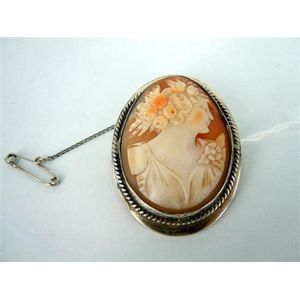Unusual John Berry Silver Repeating Verge Escapement Watch
A John Berry unusual silver single cased repeating and striking dual train verge escapement watch, gilt fullplate movement with dual train fusee engraved balance cock. Verge escapement. Strikes on the hour and repeats to strike the hour on a press of the stem. The fullplate signed John Berry London, with serial number 616. The single case pierced and engraved with foliate scrolling culminating in a cornucopia to rear. Holes to access the two winding stalks to rear of case. The face with silver dial, Roman numerals in a chapter ring, with a subsidiary outer minutes ring in Arabic numerals. Blued beetle and poker hands. Diameter: 57 mm. Provenance: The collection of Dr Trevor Hyde, Sydney
You must be a subscriber, and be logged in to view price and dealer details.
Subscribe Now to view actual auction price for this item
When you subscribe, you have the option of setting the currency in which to display prices to $Au, $US, $NZ or Stg.
This item has been sold, and the description, image and price are for reference purposes only.
- Fusee - The fusee movement was used in clocks and pocket watches from the mid 17th century. The fusee is a cone shaped drum within the works that is linked to the barrel of the spring, usually by a length of chain.
As the mainspring loses its tension over time, the cone shaped barrel compensates for this by increasing the tension, by pulling the mainspring tighter, thus ensuring the time remains constant.
Use of the fusee in clocks was superseded by the "going barrel" in the mid 19th century and for pocket watches at the beginning of the 19th century.
The fusee continued to be used in marine chronometers until the 1970s. - Cornucopia - The cornucopia, literally the horn of plenty, is a symbol of abundance and wealth. It is traditionally is represented by a curved goat horn overflowing with grain and fruit.
Modern cornucopias are often depicted as horn-shaped baskets filled with food, and this symbol is often associated with the harvest. This decorative device has a long and ancient history, with roots in Greek mythology.
In one version, when Zeus was playing with the goat Amalthea he accidentally broke off one of her horns. To atone for this, Zeus promised Amalthea that the horn would always be full of whatever fruits she desired. This became the cornucopia of the Roman goddess Copia, the personification of plenty. Other goddesses, including Fortuna and Pax, also held the cornucopia.
In furniture and decorative arts, cornucopia as a decorative element have been popular since the 16th century and can be found on items as diverse as light fittings and candelabra to clocks, sculpture and statuary and furniture.
In ceramics, cornucopia shaped vases were popular in the 19th century, in singles and pairs. - Chapter Ring - A separate metal plate on the face of a clock, on which the numerals for the hours and sometimes parts of the hours, are displayed, usually wheel shaped and sitting on top of the dial plate. The chapter ring is often a feature of the clock and can be silvered or enamelled to stand as a contrast to its background. The hours are usually shown in Roman numerals, although in the late 19th and earlt 20th century, Arabic numerals became fashionable.
- Verge Escapement - A verge escapement is an early mechanical escapement used in clocks and other timekeeping devices. It is an early form of the escapement mechanism, which is used to regulate the movement of the hands of a clock or watch. The verge escapement consists of a vertical shaft called the verge, which is mounted on the clock's main plate. Attached to the verge are two pallets, which engage with the teeth of the escape wheel. As the escape wheel turns, the pallets alternately lock and release it, allowing the movement of the clock to be regulated. The verge escapement was widely used in early mechanical clocks, but it was eventually replaced by the more accurate and reliable anchor escapement.
- Movement - The technical name for the workings of a clock or watch, and does not include the dial or case.
- Foliate - Decorated with leaves or leaf-like forms.
This item has been included into following indexes:
-
pocket watches, case type
- open face, silver case 570
- silver case 905
- pocket watches, features - repeater / repeating 107
Visually similar items

A pair of Indian emerald, ruby and polki diamond bangles. 22ct yellow gold. Total weight 85.89 grams. Inside diameter 6 cm. Width 20 mm.
Sold by
in
for
You can display prices in $Au, $US, $NZ or Stg.

9ct half engraved hinged snap bangle
Sold by
in
for
You can display prices in $Au, $US, $NZ or Stg.

A Scottish silver and shell cameo brooch; Ward Bros, Glasgow 1951.
Sold by
in
for
You can display prices in $Au, $US, $NZ or Stg.

Pair 1926 sovereign cuff links
Sold by
in
for
You can display prices in $Au, $US, $NZ or Stg.
